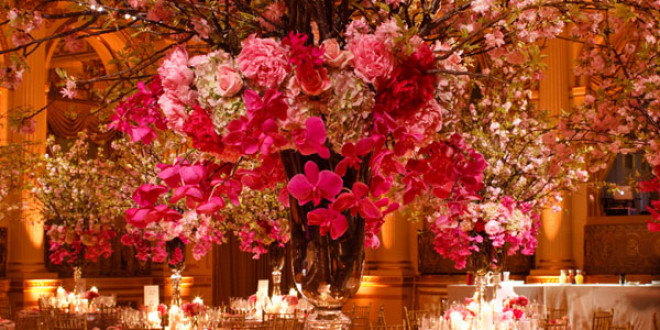[ad_1]
While your wedding ceremony can consist of absolutely anything, it often helps couples clarify their thinking to know what the traditional structure of a ceremony looks like. That way, they've got a sense of flow, and what elements they might want to look for in personalizing their wedding. I come from a theater background, so bear with me, as I tend to think of the ceremony in those terms.
Also, because I perform ceremonies for people of all gender combinations and sexual orientations, I'm going to refer to the two people getting married (some combination of brides and grooms) as The Couple.
THE PRESHOW
This is when your guests are arriving and everyone in the wedding party is finishing getting dressed, doing last minute hair and makeup checks, and peeing one more time.
Helpful Tip: Have someone – let's call them the STAGE MANAGER – designed to keep track of the time and where everyone in the wedding party is, so that they can let the Officiant know that the wedding party is ready (all bridesmaids out of the bathroom ) and the ceremony can begin.
The Stage Manager can be your wedding planner if you have one, or a trusted friend or relative. However, this person should not be in the wedding party. The Stage Manager should also have a phone handy so that any guests who are lost can call for directions.
THE PROCESSIONAL
This is where the bridal party enters. Guests comment on how great everyone looks, pictures are taken, anticipation mounts for the Big Wedding Outfits Reveal. The Processional ends when The Couple is standing at the altar.
Helpful Tip: No babies or pets in the bridal party. It looks like a cute idea, but they're just too unpredictable. In fact, there's an old saying in the theater: Never share the stage with children or animals. They'll always steal the show.
THE PROLOGUE
This is where the Officiant begins the ceremony – usually by welcoming everyone to this lovely event, honoring loved ones who might not be present, and saying something wise and pithy about love and marriage.
Helpful Tip: If you have poetry, music, or short readings you'd like included, this is a good spot for it. You can also light candles, plant bulbs, or traditionally wash each others' hands.
THE PLAY
This is the moment when the Couple exchanges rings and says their vows. Sometimes they also wrap their hands in cloth or ribbon. This is known as Handfasting.
Helpful Tip: It's OK to read your vows from a piece of paper, or have the Officiant feed them to you line by line. Also, do not try to shove the ring all the way onto the finger of your Beloved. Hands swell when people get nervous. Only place the ring as far as the big knuckle, and let the person who hand it is take it the rest of the way.
THE PRONOUNCEMENT
This is the moment when all vows have been made, and any final poems, songs, or blessings shared. The Couple may have a last sip of ceremonial wine, stomp on a glass, or jump over a broom. Then there's a big kiss, a cheer, and everyone heads out to the party.
Helpful Tip: Know how you want to be pronounced and introduced. For example: "By the power vested in me by the Highly Progressive State of Vermont, I now pronounce you husband and wife / legally married / hitched to the high heavens, etc …" Or: "May I now present to you, Mrs. and Mr. Smith! " Or: "Ladies and Gentlemen, please congratulate the Couple Jones!"
Of course, this is all just a general sketch of a ceremony. Filling it in is up to you, and I am happy to help you with that process. And remember, it does not have to be perfect. Regardless of what happens, you will finish the day married to your Beloved. And that's what matters most.
[ad_2]
Source by Kathryn Blume

